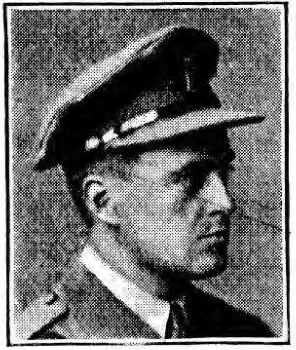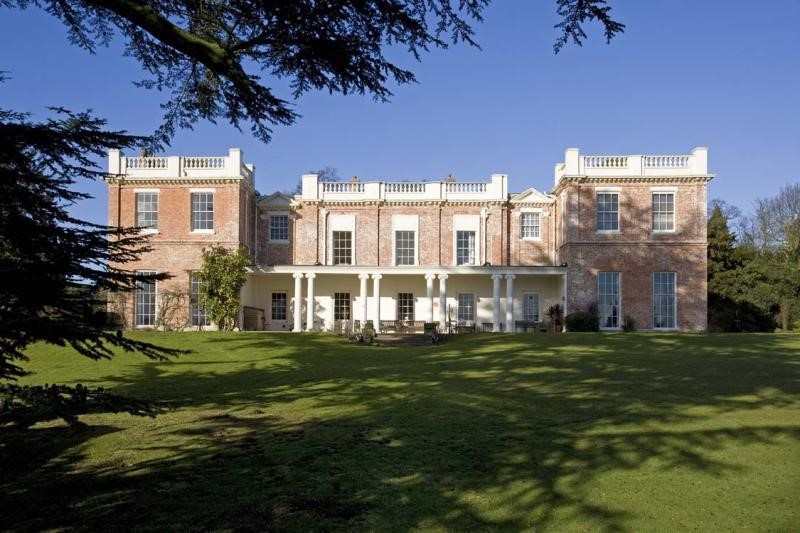WILLIAM GERALD MARTIN
Captain, King's Royal Rifle Corps
Killed in Action at Sailly-Saillisel, Somme, France, on 14 January 1917, aged 27
Buried in Combles Communal Cemetery Extension, Plot VII, Row N, Grave 40

William Gerald MartinFrom De Ruvigny's Roll of Honour
Captain William Gerald Martin, although commemorated on the memorial at Forest Row, was not a local man. He was born in London on 2 February 1889 and his parents, Edward Martin and Alice Maud Martin née Cammell both hailed from Yorkshire. He was christened at Christ Church, Lancaster Gate, near his home, on 9 March 1889 but in 1891 the young William was staying with his parents and members of the extended family at Rempstone in Nottinghamshire where his widowed grandmother was head of the household at The Hall, an 18th century mansion recently (2010) on the market for £2.5 million. His father was a barrister at law, his brother was at Eton, and a staff of eight was serving the family. William was clearly born into a privileged position.

Rempstone Hall, Nottinghamshire
The family home was at 4 Queen's Gardens, near Kensington Gardens and Hyde Park, and this was where William had been born. Like most boys of his class he was sent away to school, and in 1901 he was enumerated as a boarder at Hazelwood School, Limpsfield. I am indebted to the school's war memorial website for much of the following information. In 1902 William went to Eton, where he was in Mr McNaughton's House.
On leaving school in 1906 he presumably intended to follow a career in property, as in 1911 he was boarding in the household of an estate agent at Swindon, recorded as a Pupil to Estate Agent. He had already studied with several land agents, and was an Assistant Land Agent at Ockham Park in Surrey at the time war broke out. In the interim period (1908-9) he had been a Sandhurst cadet at the Royal Military Academy in Woolwich but didn't at that time graduate.
Soon after the outbreak of war, though, he obtained a commission (on 28 November 1914) as a Second Lieutenant in the 12th Battalion of the King's Royal Rifle Corps, B company. On 1 December the following year he was promoted to First Lieutenant. He became a Captain on 7 December 1916, possibly in an acting capacity. The 12th battalion, formed in September 1914 at Winchester, had moved to Blackdown by November and then to billets at Hindhead in February 1915. In April it was at Larkhill and on 22 July the battalion reached Boulogne as part of the British Expeditionary Force. Lieutenant Martin served in France and Flanders from 23 July 1915. His battalion saw action at a number of battles in the year leading up to his death early in 1917: namely Mont Sorrel, Delville Wood, Guillemont, Flers-Courclette, Morval and Le Transloy, the latter engagements being part of the larger Battle of the Somme. However, in July 1916, he was sent back to England suffering from flu. He had also been troubled with tonsillitis and neuralgia headaches, and it was only in early September that he was considered fit for light duties and posted to the 18th Reserve Training Battalion at South Camp at Seaford. By the third week in September he was pronounced fit for duty and returned to France.
The Hazelwood School War Memorial page gives an account of William Gerald Martin's last hours:
On the afternoon of the 12th of January 1917 the 12th Battalion King's Royal Rifle Corps entered support trenches in the area of Bolueax Wood. The following day they moved into the front line trenches at Sailly-Saillisel where they relieved the 11th Battalion of their regiment. B Company, under the command of William Martin, was on the left of the battalion's line. On the night of the 14th of January William Martin went out to check on the condition of the wire in front of his Company's positions. He was hit by a rifle bullet and killed.
The same website prints the telegram his father received a few days later:
Deeply regret to inform you Lieut. W.G. Martin Kings Royal Rifles was killed in action January fourteenth. The Army Council express their sympathy.
According to De Ruvigny's Roll of Honour Martin was buried in the cemetery at Leuze Wood, known to the troops as 'Lousy Wood', and a scene of earlier battles. Presumably his body was moved to nearby Combles Cemetery later.
De Ruvigny also quotes his commanding officer's comments:
His death is a great loss to us all, both as a friend and an officer. I know that all of us, both officers and men, had a great regard for him and will miss him exceedingly. He was always willing and did his work well, and was always cheerful even in trying circumstances, and I could not have wished for a better or braver officer.
Administration was granted to his father. The entry in the probate index describes him as a Lieutenant, and gives his address as Woodcote, Forest Row. He left £425, a considerably smaller sum than that later left by his father.
William Gerald Martin was a keen golfer, and was a member of both the Royal Ashdown Forest Golf Club and an original member of St George's Hill Golf Club in Weybridge. He won many prizes at club and open meetings. Colin Strachan in Fair Ways in Ashdown Forest describes him as one of the club's top players. Listed amongst his achievements are: the July Monthly Medal (1907), the Royal Ashdown Cup (August 1907), the Elms Cup (1909 and 1911), the Standen Cup and the Eton Prize (1909), the Gold Club Medal (1911 and 1912), and the Spring Challenge Cup in 1912. In a match in 1913 he was considered 'equally good' as Abe Mitchell. The following year he again won the Spring Challenge Cup. At St George's Hill he is remembered through the Gerald Martin Trophy, presented in 1921 by family and friends, and still played for annually.
Presumably his parents had moved to Forest Row, where they settled at Woodcote, by 1907, which explains why William was playing golf on Ashdown Forest and is recorded on the Forest Row memorial. Although his father described himself as a retired barrister on the 1911 census, he signed the Memorial Book as Edward Martin JP. He died in 1928 and his wife in 1931. William's three much older siblings, Edward, Winifred and Sybil, all outlived their brother by a considerable period. Edward died in 1937 and the sisters in the 1950s.
Pam Griffiths
11 December 2016

